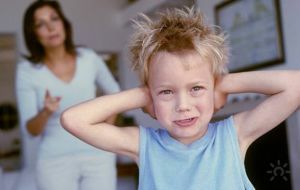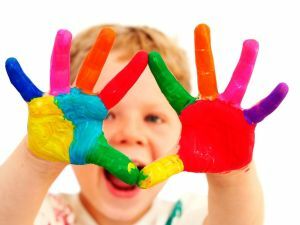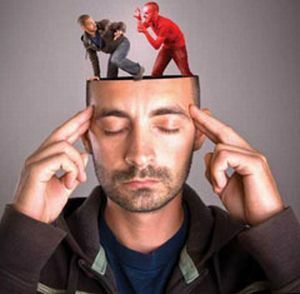 In medical practice, specialists are increasingly confronted with childhood neuroses. They can manifest themselves at a very different age in the event that the appropriate atmosphere in the child's environment is conducive to this.
In medical practice, specialists are increasingly confronted with childhood neuroses. They can manifest themselves at a very different age in the event that the appropriate atmosphere in the child's environment is conducive to this.
Important in this case is the peculiarity of the baby's nervous system, the type of his character and temperament.
To diagnose a neurosis in a baby is not realistic, since a small child can not independently describe all of his fears, fears and worries. To put the correct diagnosis in the baby, it is possible only from the age of 2 years.
In medical terminology, children's neurosis is understood as the various personality reactions( long or short-term manifestation) in response to a psychological trauma or a sudden situation. A neurosis with age and degree of its severity depends on the type of injury that the child previously received.
Contents
- Causes of the manifestation of a child's neurosis
- Varieties of neurotic states
- Symptomatic
- General signs of the disease
- Somatic evaluation
- Symptomatic versus a kind of neurosis
- Examination and diagnosis
- A competent solution to the problem
- Preventive measures
Causes of the manifestation of a child's neurosis
various factors. Among them, special attention is given to the following:
- Severe pregnancy during .When a woman is nervous and worried, adrenaline develops in her body, which negatively affects the condition of the baby's vessels. In this case, the brain suffers, because it does not receive enough oxygen.
- After birth, the young mother gives too little time to the baby ( up to 1 year).This is the reason in most cases causes neurosis in the baby. For the reason that the mother does not give the child his attention, warmth and love and the baby from the early period begins to form psychological discomfort, which will soon lead to the manifestation of anxiety symptoms of neurosis. Doctors recommend more often to keep newborns on hands, to read to them fairy tales before a dream and simply to talk.
- The parent's hyperoperation .Due to the fact that the parents strongly protect the child from the outside world, it is quite difficult for him to fit into the
 society. Therefore, very quickly the child slows down development and there are various anxieties, fears and fears.
society. Therefore, very quickly the child slows down development and there are various anxieties, fears and fears. - Aspiration of parents to force the child to listen only to their opinions .Frequent requirements and instructions to the child can lead to the development of a child's neurosis.
- Insufficient attention of parents to the life of their child .Modern parents spend less time on their children, while trying to buy off numerous toys, so they notice the problem( neurosis) quite late.
- Adverse atmosphere in the family circle .Parents' quarrels, frequent scandals and divorce may well provoke a child's neurosis.
For further treatment to be positive it is very important to establish the true cause of the ailment in the baby!
Varieties of neurotic states
Depending on the manifestation of symptoms, children's neuroses are divided into the following types:
- Childish fears of ( sudden manifestations of anxiety and anxiety in a child, their duration can range from a few seconds to 30 minutes).The child in this case is very afraid to remain alone, as he is pursued by various fantastic subjects, invented in his own head.
- Obsessive-compulsive disorder .It is classified in several forms: Obsessive( unexplained obsessive acts).Phobic( phobia of the enclosed space).
- Neurotic depression in most cases is diagnosed in adolescents.
- Neurosis hysterical can manifest itself in the preschool age, manifested by frequent crying and cries of the child.
- Asthenic neurasthenia .The child has a moody mood, he often cries, flares up trifles and most of the time is strongly irritated.
- Neurosis of the hypochondriacal is diagnosed in adolescents, with timely detection of the problem, is effectively treatable.
Symptoms of
Symptoms of neurosis in children are divided into several groups.
General signs of the disease
Symptomatic of childhood neurosis manifests itself in psychopathic and somatic character. In the first case, there is such a picture of the symptoms:
- indecision;
- uncertainty about their actions and actions;

- a constant sense of anxiety, which becomes chronic;
- fast fatigue;
- lack of any life plans and goals;
- develops an inferiority complex;
- discontent with own appearance;
- uncertain communication with peers;
- reluctance to learn and do housework;
- insomnia( in some cases, on the contrary, there may be a constant feeling of sleep);
- Overestimation or underestimation of self-esteem.
Somatic evaluation of
Symptoms of a physical nature are manifested as follows:
- frequent pain that occurs in the heart;
- profuse sweating;
- tremor of upper and lower extremities;
- development of vegetative-vascular dystonia;
- low blood pressure;
- loss of consciousness, fainting;
- appear psihalgii( pain that does not really exist).
Symptoms depending on the variety of neurosis
Symptoms also manifest themselves depending on the diagnosis
Neurosis hysterical manifests itself with such signs: 
- persistent irritability;
- inadequate behavior;
- develops hypotension;
- unexplained and unpredictable movements;
- mental affective fit( the child screams, can fall to the floor and hit it with his hands and feet);
- attempts to harm yourself( in order to attract the attention of adults).
Neurosis of the hypochondriac is manifested by such symptoms:
- frequent hysterics;
- a constant fear that a person is present with any dangerous disease;
- alarm;
- mood change;
- unexplained actions.
Depressive neurosis is characterized by such signs:
- the desire to perform any activity disappears( to study, help around the house);
- feeling of abandonment and uselessness;
- melancholy;
- mood decline;
- inferiority complex;
- development of hypotension;
- the retardation;
- dysfunction of the genital system.
Neurasthenia has the following series of symptoms:
- severe irritability;
- decrease in mental activity;
- reduced performance;
- fast fatigue;
- a constant sense of weakness and lethargy;
- development of asthenic syndrome.
The neurosis of fear is characterized by such manifestations: 
- a constant sense of fear, even with the presence of some of the adults;
- panic attacks;
- hysterics;
- long crying;
- tremor in the hands and feet;
- heart palpitations.
Obsessive-compulsive disorder is manifested by the expression of such signs:
- flinching of the whole body;
- blinking one or both eyes;
- sudden turn of the neck;
- a long snort of the nose;
- rapid movement of the lower limbs;
- punches the table;
- feeling of anxiety and tension.
Diagnosis and diagnosis of
In order for the treatment to produce the desired result, neurosis in the child should be diagnosed as early as possible, since the disease at the early stages is fairly easily treated. Diagnosis consists of several parts:
- a thorough psychological analysis of the child's life;
- analysis of parental relationships, as well as the relationship of the child with his peers;
- conversations with the child, which can be conducted in a game form to find out the questions of interest to the doctor;
- monitoring the reaction of the child at the time of the game;
- the analysis of drawings of the kid which will allow to establish its mood, to understand feelings and emotions;
- examination of parents themselves( if necessary, grandparents);
- drawing up a rehabilitation plan for the kid in conjunction with the parents.
Only after these events the active work of the psychologist with the baby and his relatives begins.
A competent solution to the problem of
 The basis for treating a child's neurosis is psychotherapy.
The basis for treating a child's neurosis is psychotherapy.
It should be understood that independent treatment can lead to irreversible negative consequences, therefore the entire course of treatment must necessarily be carried out by a qualified specialist.
Psychotherapeutic classes include the following therapies:
- Conducting individual and group sessions with the baby and parents .
- Implementation of role-playing games , which allow the child to overcome all disturbing situations.
- Art therapy ( drawing a psychological portrait of the child according to his drawing).
- For teens it is advisable to use hypnosis or autogenic training ( suggestion).
It is not necessary to use medicines during treatment. However, if the expert deems it necessary, he must carefully draw up a course of treatment.
Additional methods of combating children's neurosis include:
- aromatherapy;
- hypnosis;
- medical bath;
- auto-training.
Only after the psychogenic factors that cause neurosis in a child have been completely eliminated can one resort to therapy that will allow getting rid of somatic conditions. The main treatment options are:
- visits to medical and preventive medical sanatoria in nature;
- application of physiotherapy;
- water activities( for example, massage);
- relaxing massage;
- acupuncture;
- LFK( light gymnastics, walking on fresh air);
- herbal medicine;
- medication sleep.
Preventive measures
Prevention of the development of children's neurosis is not at all in the use of pharmaceuticals. These events are very simple, so each parent will be able to carry them out. These include:
- Compliance with wakefulness and sleep .Depending on the age of the baby, it is necessary to give him the opportunity to play and sleep
 necessary for his body the amount of time.
necessary for his body the amount of time. - Set up relations in the family( parents should not sort out the relationship and scandal with the child).
- It is necessary to try from an early age to bring up the feeling of communicability of , perseverance and interest to the world around him.
- Parents should spend as much time as possible with the child. You should play with him in developing games, visit exhibitions, be outdoors, read interesting books.
- When walking in the open air , you should not forbid the child to communicate with other children , on the contrary, you should try to get as many new acquaintances as possible.
Ignoring the manifested symptoms of neuroses can significantly affect the child's further health( mental and physiological).
That's why each parent should pay maximum attention and time to his child and understand that the manifestation of non-standard behavior may not always indicate the vagaries of the baby, but signal the presence of the disease!



